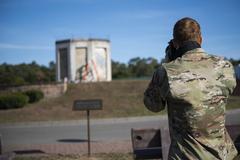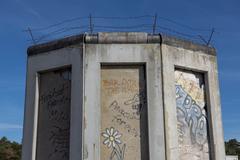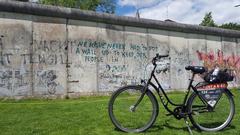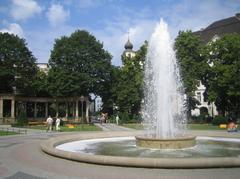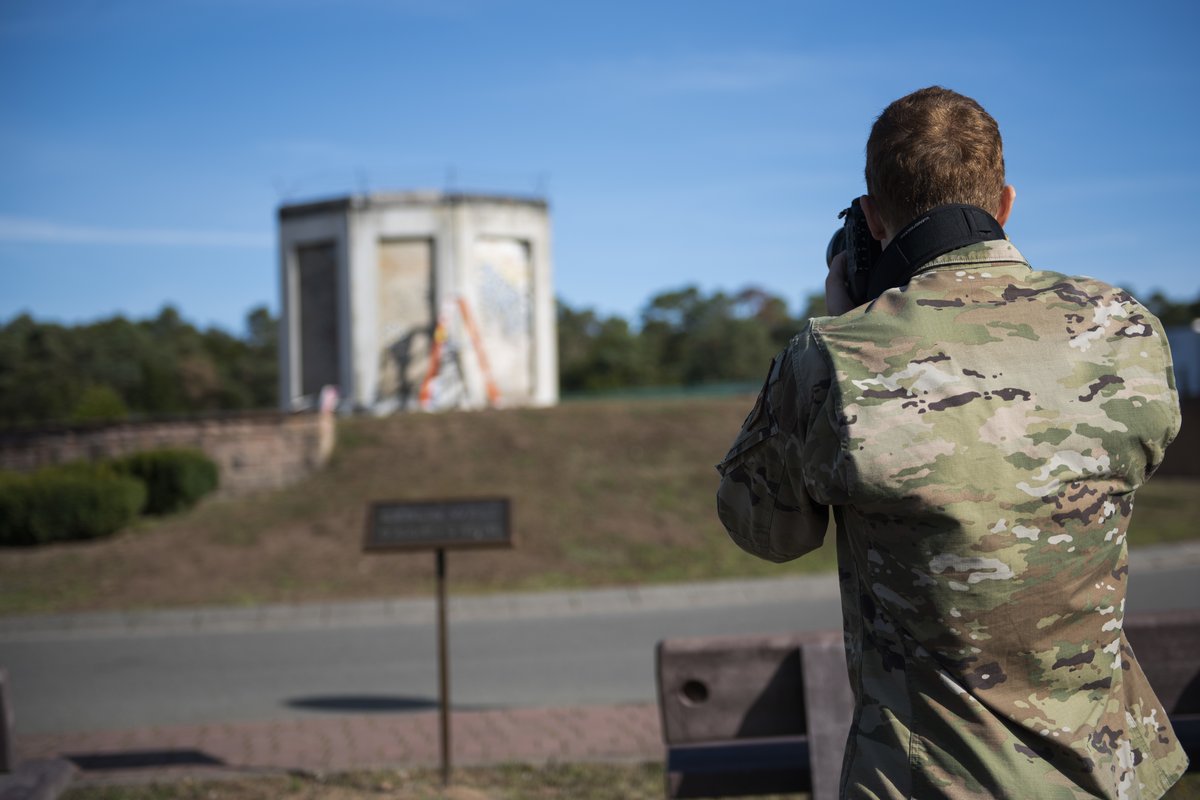
Berlin Wall Visiting Guide: Tickets, Hours, and Tips for Berlin, Germany
Date: 14/06/2025
Introduction
The Berlin Wall remains one of the most profound historical monuments of the 20th century—symbolizing the division of Germany, the ideological standoff of the Cold War, and the ultimate triumph of unity and freedom. Erected in 1961 by the German Democratic Republic (GDR), the Wall split families, communities, and an entire city for nearly three decades. Today, preserved sections and memorials such as the Berlin Wall Memorial and East Side Gallery offer visitors an immersive journey into Berlin’s turbulent past, with opportunities to reflect on stories of resilience and hope.
This guide presents detailed, up-to-date information on Berlin Wall visiting hours, tickets, accessibility, recommended tours, and practical travel tips. Whether you are a history buff, a cultural explorer, or simply curious about Berlin’s past, this article will help you plan an educational and meaningful visit. (Berlin Wall Memorial, East Side Gallery, History.com)
Table of Contents
- Historical Overview
- Visiting the Berlin Wall: Essential Information
- Getting There and Accessibility
- Visitor Tips and Best Practices
- Frequently Asked Questions
- Stay Updated & Further Resources
- Conclusion
- References
Historical Overview
Origins and Construction
After World War II, Germany and Berlin were divided among the Allies. Berlin, though deep within the Soviet-controlled zone, was split into sectors managed by the United States, Great Britain, France, and the Soviet Union (BBC Bitesize). With rising Cold War tensions, the division hardened, leading to the establishment of the Federal Republic of Germany in the West and the GDR in the East (Have Fun With History).
In response to a mass exodus of East Germans to the West—estimated at nearly three million—the GDR abruptly sealed the border on August 13, 1961, and began constructing the Berlin Wall (History Tools). The official reason was to keep out “fascists,” but the real aim was to prevent the loss of its workforce and citizens (History.com).
The Wall ultimately spanned 155 km (96 miles), fortified with concrete, barbed wire, anti-vehicle trenches, and over 300 guard towers (Perlego). The “death strip”—a barren, heavily monitored zone—stood between the inner and outer walls, making escape attempts perilous.
Life in a Divided Berlin
The Wall’s construction had an immediate and harsh effect: families and friends were separated overnight, and many East Berliners found themselves cut off from jobs and loved ones in the West (BBC Bitesize). East Berlin life was marked by shortages and surveillance, with the Stasi (secret police) keeping extensive files on citizens. Meanwhile, West Berlin, supported by Western Allies, became an island of prosperity and democracy (History Tools).
Escape Attempts and the Human Cost
Despite the risks, many tried to flee from East to West, using methods from tunnels and hot air balloons to braving the death strip. Approximately 5,000 people managed to escape; at least 140 lost their lives in the attempt (History Tools). The story of Peter Fechter, who was shot and left to die, became a powerful symbol of the Wall’s cruelty.
The Fall and Legacy
By the 1980s, reform movements, economic stagnation, and Soviet policy changes weakened the Eastern Bloc. On November 9, 1989, a mistaken government announcement opened the border, and crowds from both sides began dismantling the Wall (History.com; Perlego). German reunification followed in 1990.
Today, remnants of the Wall serve as memorials, artistic canvases, and powerful reminders of both oppression and the possibility of peaceful change (History Tools).
Visiting the Berlin Wall: Essential Information
Berlin Wall Memorial (Gedenkstätte Berliner Mauer)
The Berlin Wall Memorial on Bernauer Straße is the city’s most significant Wall site. Spanning 1.4 km, it preserves original border installations, including a watchtower and death strip, and offers outdoor exhibits, a documentation center, and the Chapel of Reconciliation. The memorial’s information panels, photographs, and multimedia installations recount the Wall’s history and personal stories.
- Address: Bernauer Straße 111/119, 13355 Berlin
- Outdoor exhibition hours: Daily, 8:00 a.m. – 10:00 p.m.
- Documentation Center: Tuesday–Sunday, 10:00 a.m. – 6:00 p.m.
- Admission: Free
- Guided tours: Available for a small fee; audioguides in several languages (source)
- Accessibility: Outdoor grounds and main buildings are wheelchair accessible; some historic structures may be less accessible.
Allow at least two hours to explore. Restrooms and a specialized bookstore are available on site.
East Side Gallery
The East Side Gallery is the world’s longest open-air mural gallery, stretching 1.3 km along the Spree River. Over 100 artists transformed this Wall remnant into a symbol of freedom with vibrant murals, including the famous “Mortal Kiss” by Dmitri Vrubel.
- Address: Mühlenstraße 70-71, 10243 Berlin
- Hours: Open 24/7
- Admission: Free
- Guided tours: Available for groups; check at the Infomobile
- Accessibility: Accessible sidewalks; no dedicated visitor center
Visit early or late to avoid crowds. Nearby Ostbahnhof and Warschauer Straße stations provide easy access.
Other Notable Sites
- Checkpoint Charlie: The most iconic border crossing, featuring a replica guardhouse and informative displays (VisitBerlin). Museum admission: €14 for adults.
- Topography of Terror: A documentation center with a preserved Wall section and exhibitions on Nazi and Cold War state terror (Topography of Terror). Free admission.
- Mauerpark: Once a border strip, now a vibrant park with flea markets and performances (VisitBerlin).
- Günter Litfin Memorial: A preserved watchtower commemorating one of the Wall’s first victims (Stiftung Berliner Mauer).
- THE WALL – asisi Panorama: An immersive panoramic museum recreating Berlin’s divided life (asisi Panorama).
- Potsdamer Platz: Features original Wall segments amid modern urban development.
- Provinzstraße Memorial & Old Cathedral Cemetery: Preserved Wall stretches offering quieter reflection (VisitBerlin).
Getting There and Accessibility
Public Transportation
Berlin’s U-Bahn, S-Bahn, tram, and bus networks connect all major Wall sites.
- Berlin Wall Memorial: U8 (Bernauer Straße), S1/S2/S25/S26 (Nordbahnhof), Tram M10, Bus 247 (source).
- East Side Gallery: S3/S5/S7/S9 (Ostbahnhof or Warschauer Straße), U1/U3 (Warschauer Straße), Tram M10 (Moovit App).
- Parking: Limited; public transport is strongly recommended.
Accessibility
- Most major sites (Berlin Wall Memorial, East Side Gallery, Topography of Terror) are wheelchair accessible. Some historic structures (e.g., observation towers) may have limited access.
- Family-friendly, with educational materials and children’s audioguides at the Berlin Wall Memorial.
- Restrooms are available at the Berlin Wall Memorial’s documentation center; café and food options nearby.
Visitor Tips and Best Practices
- Best times to visit: Early mornings or late afternoons to avoid crowds and enjoy softer light for photography (Amberstudent).
- Weather: Most exhibits are outdoors. Dress accordingly and bring sun or rain protection as needed (TravelSetu).
- Photography: Allowed for personal use; professional filming may require permission.
- Guided tours: Reserve in advance, especially for group and themed tours (Borders of Adventure).
- Respect memorials: Do not climb, sit, or write on Wall remnants. The murals at East Side Gallery are protected artworks.
Frequently Asked Questions
Q: Do I need tickets to visit the Berlin Wall Memorial or East Side Gallery?
A: Admission is free for both. Guided tours at the Memorial require a small fee.
Q: What are the Berlin Wall visiting hours?
A: Berlin Wall Memorial outdoor areas: 8:00 a.m.–10:00 p.m. Documentation Center: Tuesday–Sunday, 10:00 a.m.–6:00 p.m. East Side Gallery: Open 24/7.
Q: Are Berlin Wall sites accessible for wheelchairs and families?
A: Yes, most are accessible, but some towers and historic remnants have limited access.
Q: Can I take photos?
A: Yes, for personal use. For professional purposes, contact the site in advance.
Q: When is the best time to visit?
A: Early mornings or late afternoons on weekdays are best for fewer crowds and optimal lighting.
Q: Are guided tours available in English?
A: Yes, at both the Berlin Wall Memorial and East Side Gallery.
Q: What about restrooms and facilities?
A: Restrooms at the Berlin Wall Memorial documentation center; none at East Side Gallery (use nearby stations or cafés).
Stay Updated & Further Resources
- For the latest event schedules, opening hour changes, or special exhibitions, check official websites and social media channels.
- Download the Audiala app for immersive audio tours and real-time updates.
Official Links:
- Berlin Wall Memorial
- East Side Gallery
- Visit Berlin Tourism Board
- Moovit App for Public Transport
- Mauermuseum (Checkpoint Charlie)
- Stiftung Berliner Mauer
Conclusion
A visit to the Berlin Wall is a powerful educational experience and a unique opportunity to reflect on the resilience of the human spirit. From the historical insights at the Berlin Wall Memorial to the art and symbolism of the East Side Gallery, each site provides a distinct perspective on Berlin’s divided past and hopeful future. Careful planning around visiting hours, ticketing, and accessibility will ensure a rewarding and insightful journey.
For further tips, downloadable audio guides, and updates, explore the official resources, or enhance your trip with the Audiala app.
References
- Berlin Wall Memorial
- East Side Gallery
- Visit Berlin
- History.com
- BBC Bitesize
- Have Fun With History
- History Tools
- Perlego
- Britannica
- Amberstudent
- Ostrich Trails
- Moovit App
- Borders of Adventure
- The Broke Backpacker
- TravelSetu
- World History Journal
